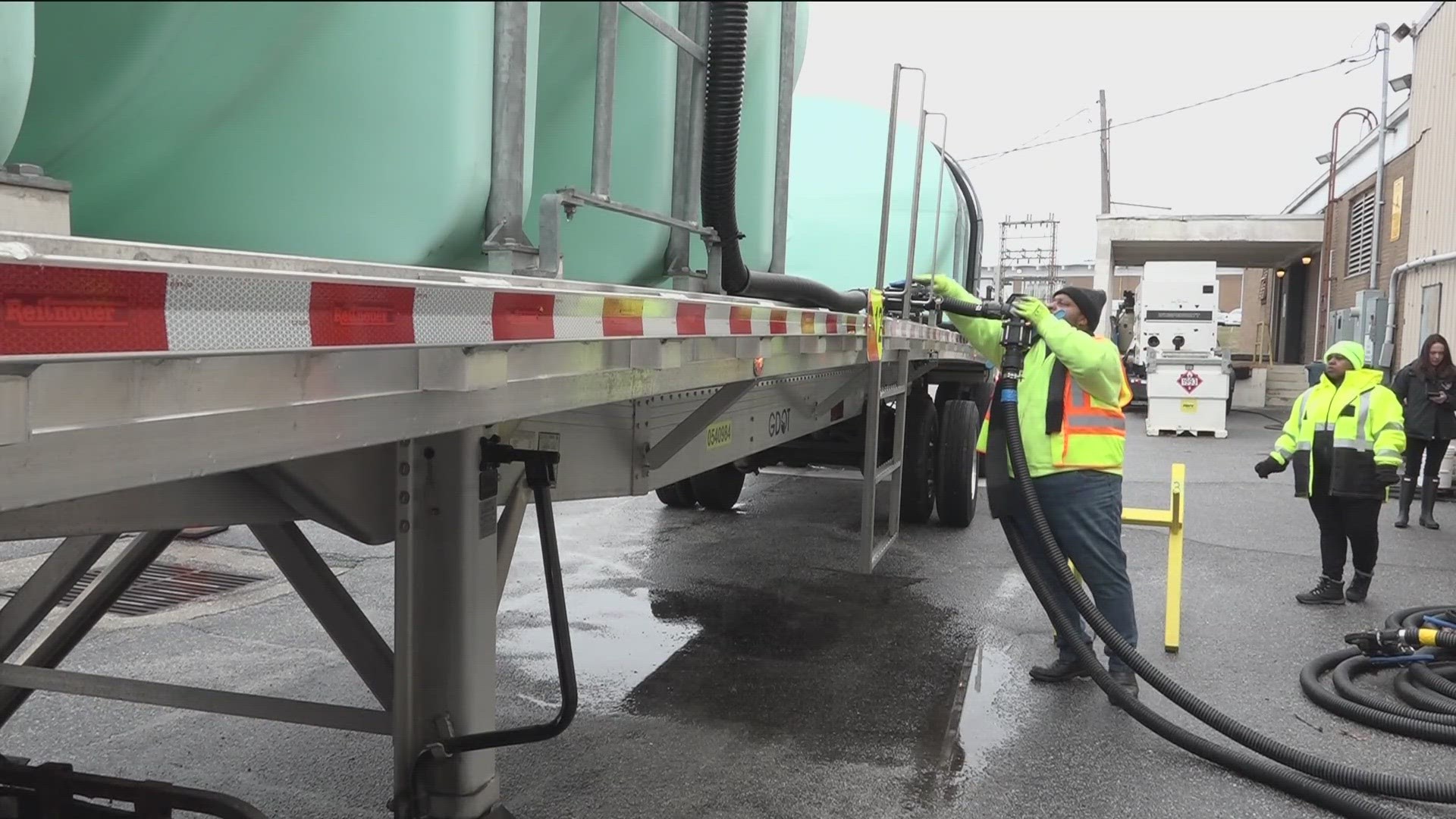ATLANTA — The snowstorm that changed the way Atlanta drivers view winter also led to major changes in the way the Georgia Department of Transportation prepares for winter storms.
What was once considered unnecessary is now commonplace.
At a facility in Forest Park, crews fill large tanks with brine, the water and salt mixture that repels snow and ice. GDOT crews have mixed and stored nearly 2 million gallons of brine, enough to slather area roads anytime there’s a threat of winter weather.
That was not the case during the winter of 2014 when two-and-a-half inches of snow paralyzed Atlanta.
A day following the storm, 11Alive's Jerry Carnes asked the current GDOT Commissioner, Keith Golden: "If some of the commuters around said DOT gets an “F” on this one, what would you say?”
“I would say look at everything in terms of context,” answered Golden. “We’re not satisfied with the response.”
The context is that more than a million people went to school and work on the morning of January 28, 2014. When the snow started falling around noon, everyone tried to make it home all at once, joining the big rigs that had been encouraged to stay clear of Atlanta.
GDOT crews struggled to navigate their way through jammed highways to icy bridges and drivers in need of help.
“We were doing everything we could do to get out there and hep people,” Josh Whisner said, a tow truck driver who was with Marietta Wrecker at the time. “You just couldn’t get anywhere.”
Among the many changes over the past ten years, GDOT has put an emphasis on pre-treating roads with brine along with other winter weather weapons in its arsenal, including:
- 1,800,950 gallons of brine
- 53,880 tons of salt
- Six multi-lane tow plows to clear two lanes in one pass
- 393 snow removal dump truck units
- Sensors that alert GDOT to areas where the road temperature is below freezing and needs treatment
“When you look at the data that technology gives us, we can make really informed decisions about where our crews go, where we focus our materials, where we focus our manpower,” Natalie Dale, with GDOT said.
All because of a day 10 years ago that changed the way Atlanta views winter.

